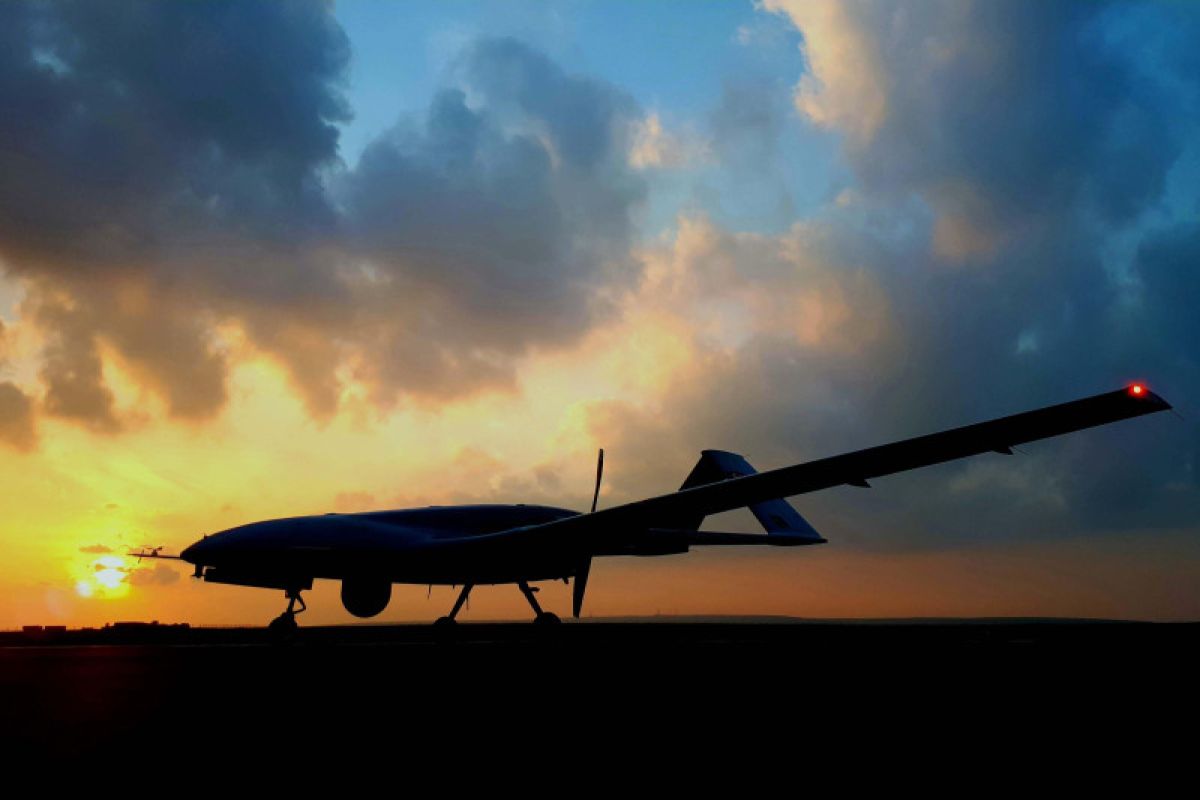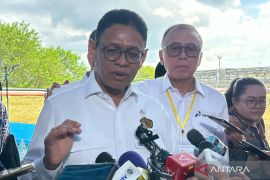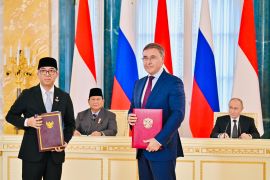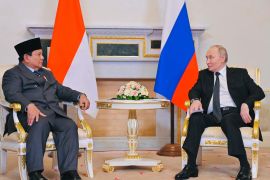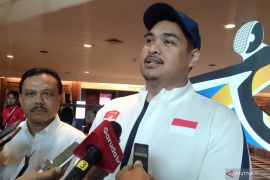The war has seen both sides employ a significant number of old and new weapon systems, which include unmanned aerial vehicles or more commonly known as drones.
The vast scale of these systems has significantly impacted the battlefield, posing new opportunities and challenges for modern militaries to exploit and overcome.
Since the conflict began on 24th February 2022, drones have featured prominently on the Ukrainian battlefield.
Both Ukraine and Russia employed a large number of foreign and domestically built drones to fulfill a number of reconnaissance and strike purposes.
For reconnaissance purposes, drones provide the added benefit of increasing situational awareness. By putting what is basically “eyes in the sky”, drone users can gain a more comprehensive picture of the battlefield below.
Drones allow them to track friendly forces' movement in real-time, identify enemy locations, and pinpoint possible ambushes along the lines of advance.
It also enables long-range indirect fires to strike with increased accuracy.
Ukraine and Russia have extensively employed drones in target acquisition and artillery spotting roles. In this case, drones in the air provide target coordinates to artillery batteries allowing for accurate fires.
Aside from reconnaissance purposes, the use of combat drones has also featured prominently in the conflict. Ukraine effectively operated Turkish-made Bayraktar TB2 combat drones which played a significant role in their counter-offensive operation to retake Snake Island.
Another feature of the Ukraine-Russia war is loitering munitions known as kamikaze/suicide drones. Russian forces deploy Iran-made Shahed-136 drones and hit Ukrainian critical infrastructures with GPS accuracy and cheap production with industrial quantity.
Ukraine also deployed kamikaze drones made by its Western allies, notably Warmate and Switchblade drones/loitering munitions.
All this has transformed the war in Ukraine into one characterized by a more “open” battlefield dominated by indirect fires.
The proliferation of drones ranging from cheap commercial quadcopters equipped with cameras to large medium-high altitude unmanned combat aerial vehicles (UCAV) equipped with long-range sensors and onboard weapons, has greatly reduced the ability for armies to hide on the battlefield.
With the amount of “eyes in the sky” prowling above the battlefields of Ukraine, moving forces notably for offensive operations undetected is very difficult.
Time and time again, we have seen Ukrainian drones assist in repulsing Russian attacks by calling down accurate artillery fire on the forces below.
A notable example occurred early in the war when the Russian 90th Tank Division was stopped outside Brovary by an artillery ambush assisted by drones, destroying many tanks and armored vehicles.
Another example was in May 2022, when the Ukrainian 17th Tank Brigade using drones, spotted an attempted Russian crossing of the Siverskyi Donets River and proceeded to launch a devastating artillery strike which resulted in the destruction of an entire Russian battalion, including more than 70 tanks and armored fighting vehicles (Forbes, May 2022).
Lessons learned for TNI
The increasing lethality of indirect fires by using drones in the war in Ukraine presents some lessons for militaries, including the Indonesian armed forces (TNI), to adapt to the conditions of modern warfare.
As seen in Ukraine, drones provide users with increased situational awareness of the battlespace and enable indirect fires to strike with greater precision.
Indonesia realized the advantages offered by drones, evidenced by the adoption of several drone systems, both large and small, among the army (TNI AD), the navy (TNI AL), and the air force (TNI AU), as well as developing domestically produced drone systems.
Currently, TNI fields several drones ranging from commercial quadcopters to dedicated military surveillance and strike drones sourced from foreign suppliers.
Some notable systems include the Aerostar UAV, used to support anti-terror operations in Sulawesi in 2016, and the medium altitude long endurance combat UAV, CH-4B UCAV, capable of carrying weapons, and the ScanEagle UAV, a lightweight reconnaissance drone able to be operated from ships allowing for greater maritime surveillance.
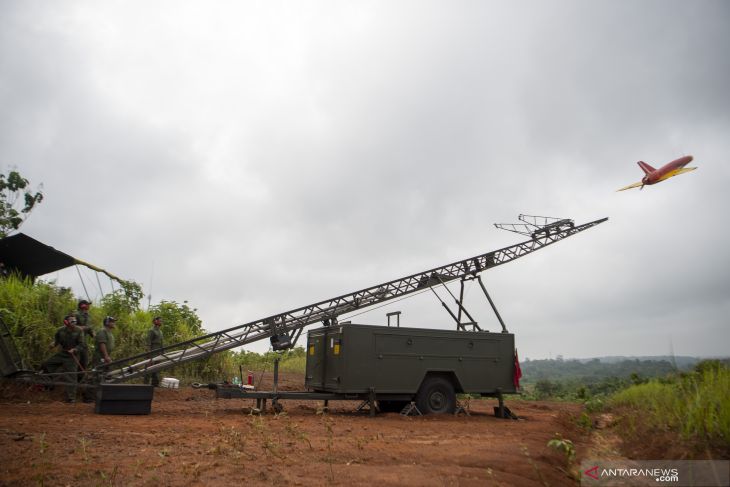
Meanwhile, acquisitions of foreign drones include Turkish-made Bayraktar TB-2 and Anka UCAV (Republika, February 2023).
The inclusion of drones into TNI’s inventory has led to the developing of new methods for integrating drones with current units. As shown in the war in Ukraine, close integration between drone surveillance and artillery batteries has enabled highly accurate indirect fires to be brought to bear on the battlefield.
In this regard, TNI AD’s field artillery force has also been exploring the use of drones for artillery spotting in collaboration with domestic manufacturers (Dispenad, July 2022).
Though the adoption of drones by TNI is a positive step to contend with the conditions of 21st-century warfare, there are still some lessons and challenges that Indonesia can heed regarding using drones.
One notable lesson is the mass adoption of drones and counter-drone capability in all branches of the armed forces, from maneuver units operating at the frontlines up to higher echelon forces acting within the operational depth.
A study by UK’s RUSI thinktank on the preliminary lessons from the war in Ukraine, published in November 2022, found that the operation of drones, notably for use by ground forces, can be split into three broad categories (Zabrodskyi et al, 2022).
The first category is the use of rotary-type drones that can maneuver close to the ground and in complex terrain, fielded across all maneuver formations for surveillance, situational awareness, target acquisition, fire correction, and other sets of tasks.
The second is the fixed wing medium altitude drones able to fly into the operational depth to hold tasks for target acquisition or directing effects from other systems on the battlefield.
Then the third category comprises larger drones carrying higher echelon sensors besides cameras such as radar or advanced infrared sensors. Its main task will be monitoring vast swathes of the battlefield from afar. It can also be deployed for maritime patrol purposes.
Due to inevitable attrition, the first two categories of drones must be cheap and available in large quantities. Drones deployed among maneuver units on the frontlines and those flying into the operational depth of the enemy will suffer losses.
Experience from the war in Ukraine has also shown that the average lifespan for a Ukrainian UAV operating on the frontlines is roughly seven days (Watling and Reynolds, 2022). It is due to extensive Russian counter-UAV measures employing air defense to intercept drones and electronic warfare (EW) to jam or disable them.
As for the third category, drones of this type are simply too expensive to be purchased in large quantities and cannot be deployed in high-threat environments. Instead, it should be operated in relatively safer rear areas and leverage its onboard radar and other sensors to monitor the battlefield from a distance.
What all this means for TNI is that it should endeavor to possess enough quantities of category 1 and 2 drones and include a sufficient number of trained personnel to operate them. In this regard, TNI should look into providing drone capability to all of its branches, down to the lowest unit formation. In the case of TNI AD, this would mean giving drone capability down to infantry platoons, as is being done by both sides of the war in Ukraine.
Cost Comparison
In terms of cost, providing category 1 drones, mostly civilian models, to each TNI AD platoon should be no more expensive than providing every soldier with an assault rifle. For comparison, the cost of TNI’s mainstay assault rifle, the PT Pindad made SS1 and SS2 is around Rp 10 – 35 million per unit.
While commercial quadcopter drones like the famous Chinese DJI come at around Rp 6 – 30 million per unit, meaning providing a platoon with a couple of drones should be well within the realm of affordability.
Of course, one special consideration to bear in mind when using civilian drones for military purposes is they may have some issues with security.
Some civilian drone manufacturers, like DJI, embed a public safety feature called AeroScope to track the location of drones and its operator that is originally meant to help law enforcement monitor drone activity.
Russia exploits this feature in the war in Ukraine to track and eliminate Ukrainian drone operators (The Verge, March 2022).
Aside from providing drones to each branch and unit of TNI, another important lesson from the war in Ukraine is the need to have a sufficient number of trained personnel to operate them.
TNI should heed these lessons by setting up training programs that can produce sufficient numbers of drone pilots to support the mass adoption of drones within TNI.
In this regard, partnership with civilian drone communities, particularly during the developing phase of the program, can provide valuable insights into the formation of a training curriculum for drone pilots. Of course, it does not mean the wartime aspect of drone piloting should be left out of the training.
As Ukraine’s experience in the war has shown, operating drones during peacetime and wartime requires different considerations, with wartime pilots notably having to worry about being targeted by the enemy.
However, this should also gain support from the political and civilian stakeholders. The incorporation of drone warfare into the ongoing Minimum Essential Forces (MEF) project is a subject for political stakeholders in collaboration with military stakeholders.
Drones could also be part of Indonesian Defence Diplomacy, which has been reinforced by Defence Minister Prabowo Subianto, and also a call for cooperation with the Ministry of Foreign Affairs.
Drones are likely to be the defining feature of present and future warfare. Indonesia should always be prepared with anything. As the adage says, si vis pacem para bellum: "if you want peace, prepare for war".
*) Muhammad Teguh Ariffaiz Nasution, Graduate Student of Strategic Studies, Australian National University (ANU)
*) Abid A. Adonis, PhD/DPhil Student at the Oxford Internet Institute, University of Oxford
The views and opinions expressed on this page are those of the authors and do not necessarily reflect the official policy or position of ANTARA News Agency.
Related news: Ukrainian civil society visits Indonesia to strengthen relations
Copyright © ANTARA 2023
